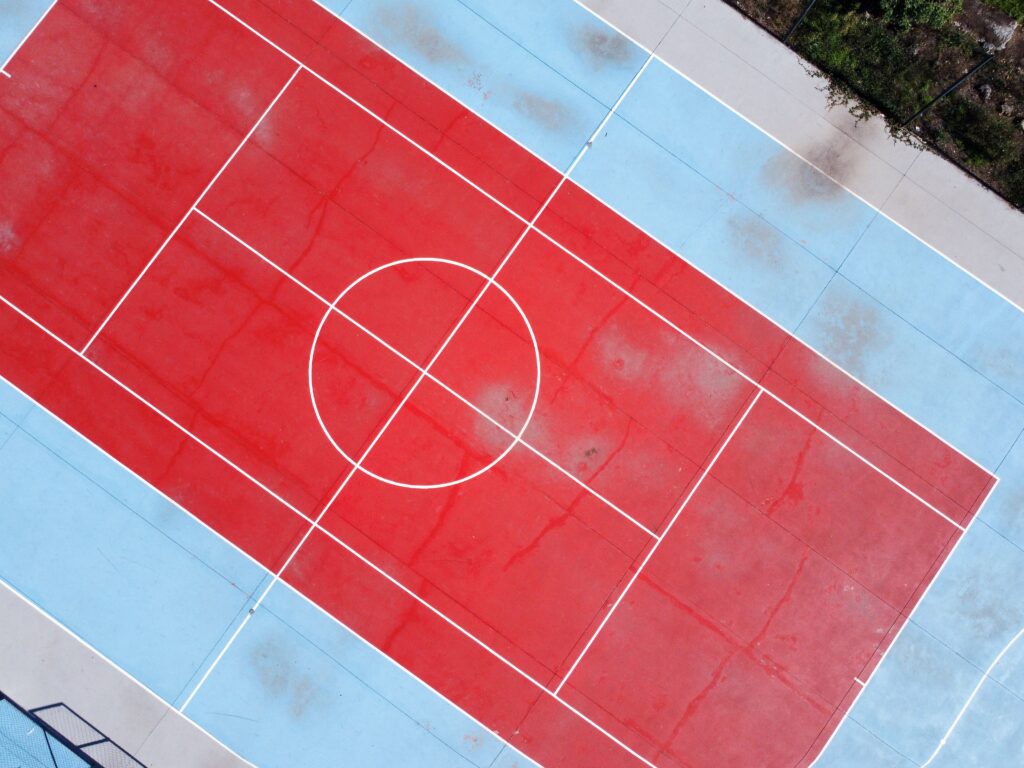January 18, 2025
Gustavo Rodriguez
Origins
The first interlocking tile designed for sports play was released to the market in the early 90s by Sport Court. This modular sports flooring system provided an alternative to traditional painted asphalt and concrete courts offering added benefits over hard courts.
Acceptance
The sports tile first introduced offered end users the
ability to play their favorite sports on a long lasting,
portable, and easy to install court. Key features that
separated tiles from other courts were inherent
shock absorption of the plastic tile product and
built-in slip resistance due to a grooved surface
molded into each tile.
The tile court could be set up quickly over a
degraded surface to transform a worn out hard court
into a brand new vibrant playing surface without any
specialized skill set. The courts arrived pre-painted
2
meaning play could start immediately. Popularity quickly grew and the foundation for the modular sports surfaces market was laid down.
Development
The early 90s saw the first sports tile courts built from high-density polyethylene (HDPE) known for its durability and UV resistance. By the 2000s increased demand led to changes in tile composition allowing sports tiles to be refined and also tailored to specific sports. Polypropylene also became a popular material for the production of sports tiles offering shock absorption, light weight, and high heat resistance. The improved material compositions allowed for better bounce for racquet sports while conforming to minor asphalt or concrete irregularities. Sports tiles became an option for prolonging the life of older hard courts instead of costly repairs or reconstruction. The 2010s saw widespread global adoption of modular sports tile courts.
Professional Use
Professional events such as the NBA All-Star Weekend have used modular sports tiles in its outdoor and pop-up venues. The FIBA (International Basketball Federation) utilizes tiles for its 3 on 3 events.
The FIFA Futsal World Cup has been held over modular sports tiles. The tiles provide consistent ball roll, traction, and comfort while offering the benefits of portability.
The US Open Pickleball championship has utilized tiles in order to quickly set-up playable and aesthetically pleasing courts in open areas. The tiles for the US Open Pickleball championship are made of specially formulated HDPE that emphasize consistent ball bounce, traction, and game speed.
The Professional Pickleball Association (PPA) has embraced the use of modular sports tiles in its tournaments which attract top tier players. The PPA Las Vegas Open and PPA Masters have both utilized sports tiles at the highest level of pickleball play.
3
Tiles make sense for large events where there is a need for multiple temporary courts, but the cost or time required to build and paint hard courts does not make financial sense. The tile courts can be disassembled and stored until their next usage anywhere there is a hard flat surface.
Future
As more end users become exposed to modular sports tiles demand follows suit. Manufacturers continue to look for an edge over their competitors by continuously improving tile composition for better playability and durability. Modern tiles with better grip, built-in shock absorption padding, anti-theft locks, anchor points, enhanced UV resistance, and intricate logos are all part of the improvements seen in game tiles today.
Game tiles’ ability to transform new and worn out hard courts easily and cost effectively has proven to be a game changer for those looking for an alternative to traditional hard painted courts. Tiles continue to be implemented in residential, scholastic,municipal, and professional settings with great success.
The acceptance of modular sports tiles in the professional realm with the ability to set up temporary courts for tournaments and events points to a bright future for the further adoption and development of sports tiles.

